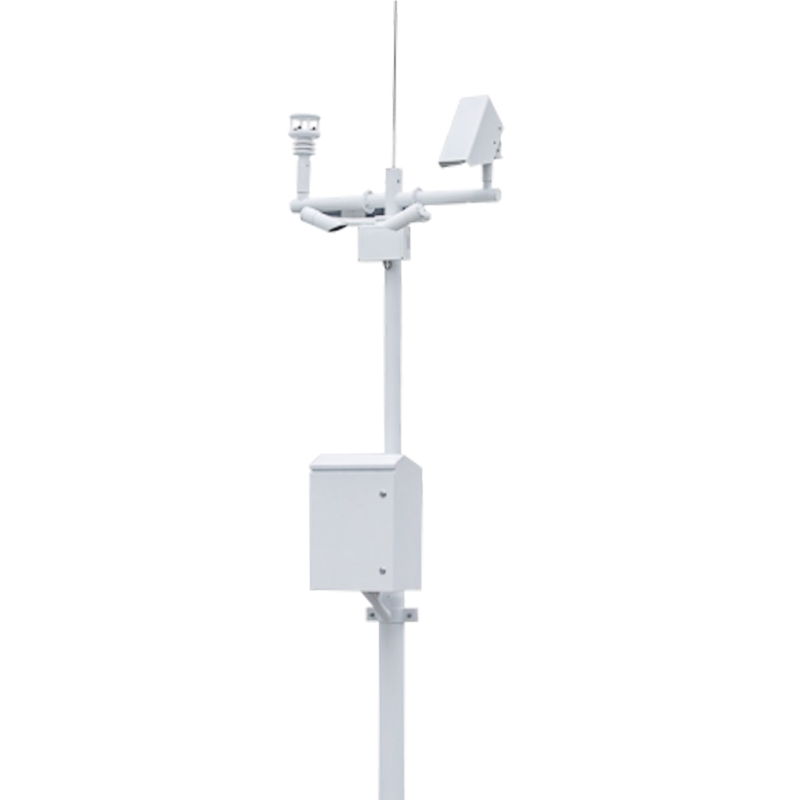Shandong Fengtu IOT Technology Co., Ltd
Sales Manager:Ms. Emily Wang
Cel,Whatsapp,Wechat:+86 15898932201
Email:info@fengtutec.com
Add:No. 155 Optoelectronic Industry Accelerator, Gaoxin District, Weifang, Shandong, China

Sales Manager:Ms. Emily Wang
Cel,Whatsapp,Wechat:+86 15898932201
Email:info@fengtutec.com
Add:No. 155 Optoelectronic Industry Accelerator, Gaoxin District, Weifang, Shandong, China
time:2024-09-10 17:23:13 source:Weather Station viewed:431 time
Aviation safety is closely linked to meteorological conditions. Every flight—whether it's takeoff, en route, or landing—is inevitably affected by the weather conditions. Accurate meteorological information is crucial for ensuring flight safety as it helps pilots and air traffic controllers make informed decisions. The timeliness, effectiveness, completeness, and accuracy of weather forecasts and real-time observation data play a decisive role in the safe flight of aircraft. Pilots rely on this information to avoid adverse weather conditions, such as thunderstorms, turbulence, and wind shear, thereby ensuring the safety of passengers and crew. Therefore, it is necessary to establish a comprehensive meteorological service network at airports.
Airport weather stations collect key weather parameters through multiple meteorological sensors deployed around the airport runway. These sensors monitor meteorological elements such as wind speed, wind direction, temperature, humidity, air pressure, and precipitation, and transmit the data to a central data processing unit. At the central unit, the collected data is analyzed and processed, then distributed in real-time to different user ends through a computer network system. This includes approach control, tower, meteorological forecasting, observation departments, airport command centers, and airline operations control centers. Such a system ensures that all relevant parties have access to the latest meteorological information, which plays a key role in flight operations, flight scheduling, and safety decision-making, enhancing the efficiency and safety of the entire aviation system.
Airport weather stations are responsible for tracking a series of key meteorological parameters that are crucial for aviation operations. The system monitors the following meteorological elements through a network of precise sensors:
Meteorological Optical Range (MOR): Measures atmospheric visibility, which is crucial for aircraft takeoff, landing, and taxiing.
Runway Visual Range (RVR): Provides the visual range on the runway, directly affecting the safety of aircraft takeoffs and landings.
Wind direction and speed: Changes in wind have a significant impact on flight paths and aircraft performance, and are key factors in flight planning and safety.
Air pressure: Measurement of air pressure is very important for adjusting flight altitude and meteorological analysis.
Temperature: Temperature affects air density, which in turn affects the lift of the aircraft and the performance of the engines.
Humidity: The level of humidity can affect the risk of aircraft icing and passenger comfort.
Precipitation: Precipitation conditions, including rain, snow, hail, etc., have a direct impact on flight safety and airport operations.
Clouds: The height, thickness, and type of clouds are very important for flight path planning and weather forecasting.

Small weather station configuration listWindway Technology is the source manufacturer of small weather stations, whose configuration list is shown below:Miniature weather sensorSolar panelIP66 protective box (with LCD screen inside)2m vertical poleGround cageCloud platformUpper computer, Android APP...
What is the significance of rainfall station construction? What role does it play in urban flood control? How to do a good job in rainwater collection, distribution and utilization to provide guarantee for storm disaster prevention? These problems need us to explore constantly.Rainfall gauge station...
wind speed sensors are ultrasonic sensors that measure wind speed and direction, providing important data for meteorological research, aviation, offshore operations, and more....
Radar water level meter is a non-contact precision water level measuring instrument. The application of this instrument makes the hydrological test transition from the traditional full-time manual observation mode to the modern hydrological digital mode, which improves the efficiency.The radar water...